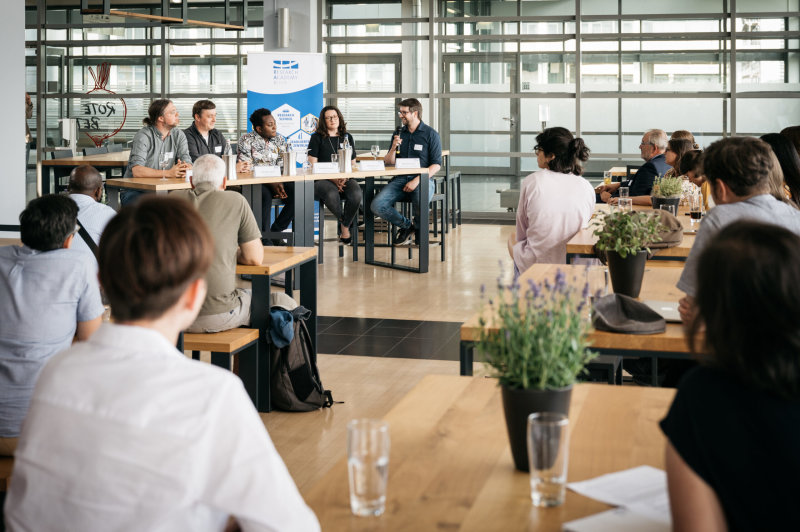UA Ruhr News Center
04. 07. 2022
Global Young Faculty meets Research Academy Ruhr: Exciting discussions on science communication at the Summer Evening 2022
This year’s ‚Summer Evening‘ of the Research Academy Ruhr (RAR) took place on June 28. In the vegan restaurant „Rote Bete“ of the Ruhr-Universität Bochum, a top-class panel discussed various aspects of science communication. The discussion was titled „Science Communication, Social Media & Outreach Activities: Why, How & Sharing Experiences for Postdocs“.
The Global Young Faculty (GYF) working group ‚Applied Science Communication‘ was invited to plan and host the discussion, as its members work on this topic in the GYF. The working group studies the impact of different formats of science communication on different target groups. The results will later help scientists make informed decisions about their choice of communication formats.
RAR Speaker Prof. Dr. Wilhelm Löwenstein introduced the event, Dr. Maximilian Krug, member of the GYF working group ‚Applied Science Communication‘ and communication scientist at the University of Duisburg-Essen, moderated the panel. Four young scientists from the UA Ruhr universities who are involved in science communication in different formats took part in the discussion.
The discussion focused on the following topics:
- Goals and motivations for engaging in science communication, social media, or outreach activities.
- Impact of science communication activities on one’s research and their contribution to the reputation and standing of one’s research.
- Different approaches to publishing research results, using social media, or sharing research results with non-specialists, and experiences with different media.
- How to manage time, resources, and conditions for publishing research results.

The participants discussed these topics in an engaged and detailed manner. In the end, the following insights can be summarized:
- Science communication is not „shouting into the void“, but it should communicate scientific knowledge and scientific principles.
- Science communication has different target groups (inter- and intradisciplinary, general and specific public), all of which can be reached with different formats
- Science communication methods are diverse: social media (Twitter, Instagram, YouTube, Facebook), podcasts, interviews, science fiction, open houses, etc. The important thing is to choose the format you feel comfortable with.
- Science communication is time consuming and often not funded. Therefore, science communication tends to happen on the side when you can’t focus on current tasks. How much time and energy someone invests in science communication varies and depends on personal motivation
- Science communication is not about lecturing the public. It is about giving them insights into current scientific discourse that may be relevant to their lives. At its best, science communication is an interaction and collaboration with the public.
- Not every result is relevant to the public. Only results that are truly interesting should be part of science communication. It is important not to exaggerate the importance of one’s results.
After the panel discussion, the audience had the opportunity to ask questions to the panelists. The entertaining evening ended with a shared dinner and good conversation. Conclusion for a successful evening: It was worth it, gladly again!


